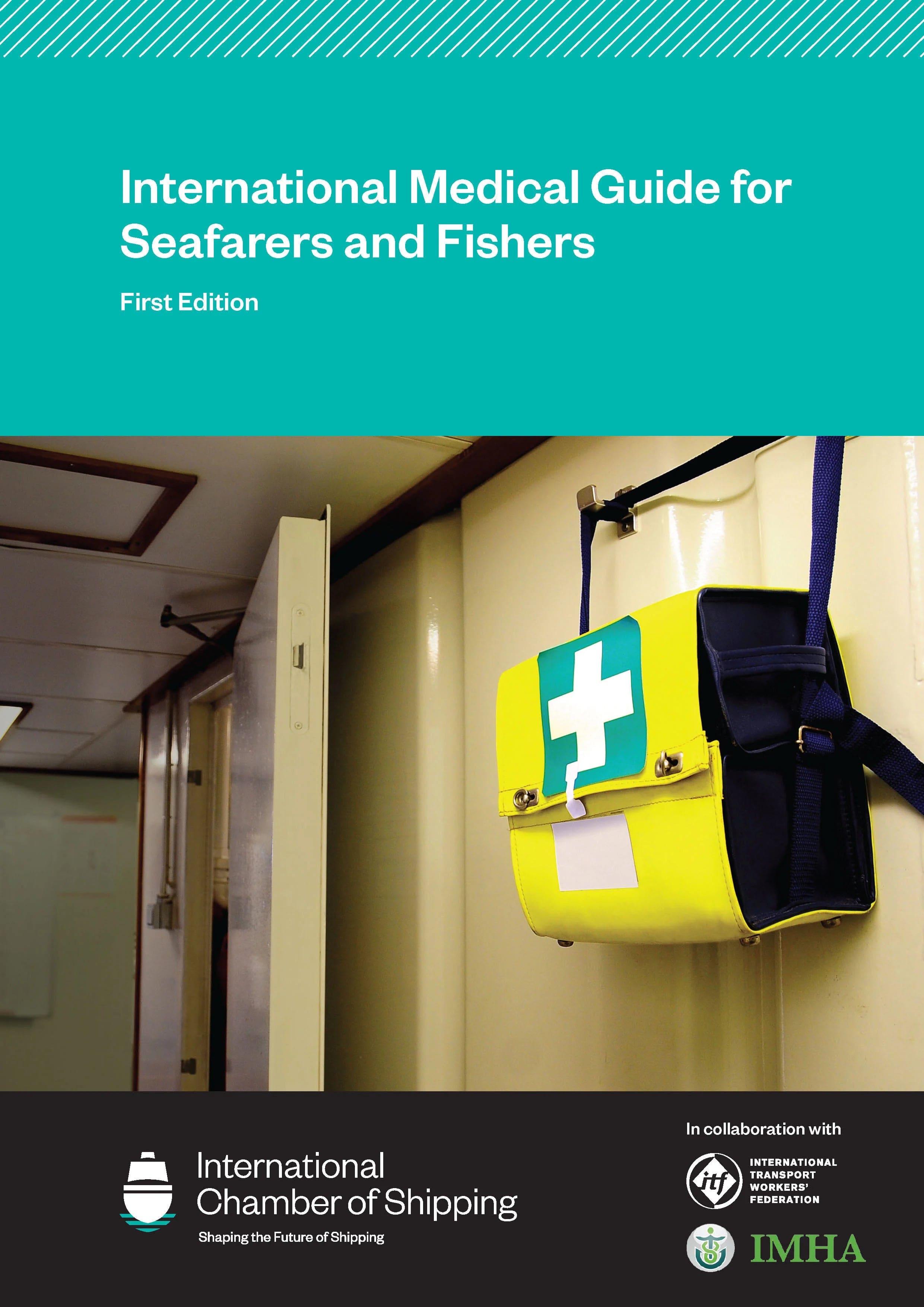Short Overview
This modern and practical medical guide from ICS has been written and reviewed by an international group of maritime medical practitioners and experts with many years' experience of working with and training seafarers and fishers. It can be used on board all ships and fishing vessels, anywhere in the world, and in onshore safety departments, medical assistance centres and training institutions who support seafarers and fishers.
Detailed Overview
When a seafarer or fisher becomes sick or is injured at sea, it is up to one of their fellow crew members to provide medical relief until professional medical services can be reached. This person will have had limited medical training on shore, as required under the STCW Convention, but is not a fully-trained doctor. When confronted with a medical emergency far from land, the person responsible for medical care relies on telemedical assistance services (TMAS), the medicines and equipment available in the on board medicine chest, and the on board medical guide for support.
This modern and practical medical guide from ICS has been written and reviewed by an international group of maritime medical practitioners and experts with many years' experience of working with and training seafarers and fishers. It can be used on board all ships and fishing vessels, anywhere in the world, and in onshore safety departments, medical assistance centres and training institutions who support seafarers and fishers.
The International Medical Guide for Seafarers and Fishers is:
1. International
- Terminology and medical guidance is recognised and applicable globally
- Medicines and equipment are available globally, right now
- Reviewed and approved by international organisations representing shipowners, seafarer unions and maritime health professionals
- Latest medical knowledge from maritime medical practitioners from every continent available in one guide
2. Comprehensive and up-to-date
- Guidance on all injuries, illnesses and health issues experienced on ships and fishing vessels
- Brand new chapters not available in existing international guides, including a chapter on assessing and treating mental health
- Action cards address emergency situations and can be carried in the medical bag for quick access
- Updated Ship’s Medicine Chest includes medicines and equipment that are easy to source anywhere in the world, right now
3. Practical and user-friendly
- Easy-to-use format for a non-medical professional to navigate and apply in a medical situation
- 3D visual aids, tables, charts and assessment forms to help crew follow procedures correctly and find the most important information quickly
- Print and digital ebook formats available to give shipping companies flexibility and confidence that a guide will always be available in a way that suits crews and voyages
- Comprehensive index includes symptoms to help readers find what they need quickly
Featuring a foreword from Kitack Lim, Secretary-General of the International Maritime Organization (IMO), and written in collaboration with the International Transport Workers’ Federation (ITF) and International Maritime Health Association (IMHA).
[The £225 RRP includes:
- The International Medical Guide for Seafarers and Fishers
- 10 A5 Action Cards; and
- The Ship’s Medicine Chest to accompany the International Medical Guide for Seafarers and Fishers.]
Carriage of a medical guide on board is mandatory under the International Labour Organization’s Maritime Labour Convention (ILO MLC). The International Maritime Organization’s International Convention on Standards of Training, Certification and Watchkeeping for Seafarers (IMO STCW) outlines the mandatory minimum standards of training for officers responsible for medical care and requires seafarers to be trained in the treatment of injuries or conditions in accordance with national and international medical guides. The fishing industry requires proper medical care to be provided on board under the ILO Work in Fishing Convention, and medical training for those providing first aid care under the IMO STW-F 1995 Convention.
Contents Listing
Foreword
Introduction: How to use this book
Abbreviations
Illnesses and Medical Problems
1 ABCDE: assess a sick patient
2 CPR and defibrillators
3 Choking
4 Breathing problems
5 Shock (circulatory collapse)
6 Major bleeding (haemorrhage)
7 Chest pain
8 Anaphylaxis and allergy
9 Seizures (fits) and convulsions
10 Headache
11 Loss of consciousness
12 Stroke (cerebrovascular accident)
13 Diabetes
14 Sepsis and infectious diseases
15 Acute abdominal pain
16 Heat-related illnesses
17 Drowning
18 Hypothermia and cold injuries
19 Poisoning
20 Acute eye problems
21 Acute ear, nose and throat (ENT) problems
22 Acute dental problems
23 Back pain
24 Joint pain
25 Urinary tract and male genital problems
26 Sexually transmitted infections
27 Gynaecological problems
28 Menstruation, pregnancy, miscarriage and childbirth
29 Common skin problems
30 Seasickness
31 Mental health issues
32 Alcohol, tobacco and drug misuse
Injuries and Trauma
33 ABCDE: assess an injured patient
34 Head, face and eye injuries
35 Neck and spinal injuries
36 Chest injuries
37 Abdominal injuries
38 Pelvic and hip injuries
39 Injuries to bones, joints, muscles and other soft tissues
40 Wounds and bleeding
41 Burns
42 Bites and stings
Additional Information
43 Assessing and managing pain
44 Practical procedures
45 Communicating with TMAS, and documentation
46 Moving a sick or injured patient
47 Medical assessment ashore
48 Medical evacuation
49 Continuing care
50 Care of others on board
51 Death on board
52 Officer responsible for medical care
53 Health risks on board
54 Anatomy and physiology
55 The International Health Regulations
Assessment forms and charts
Fluid balance chart
Medical assessment form
Medication chart
Observation chart
Index
class="MsoNormal" style="margin-bottom: 0in; line-height: normal;"
Additional Information
Number of Pages: 668
Published Date: March 2023
Book Height: 0 mm
Book Width: 0 mm
Author: ICS







